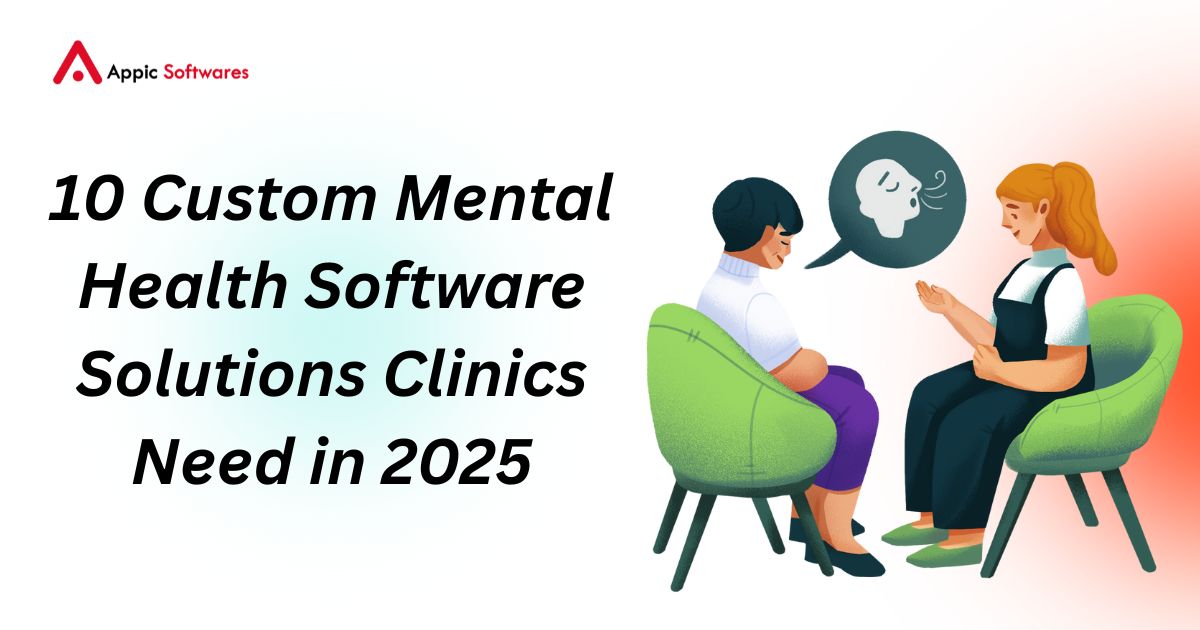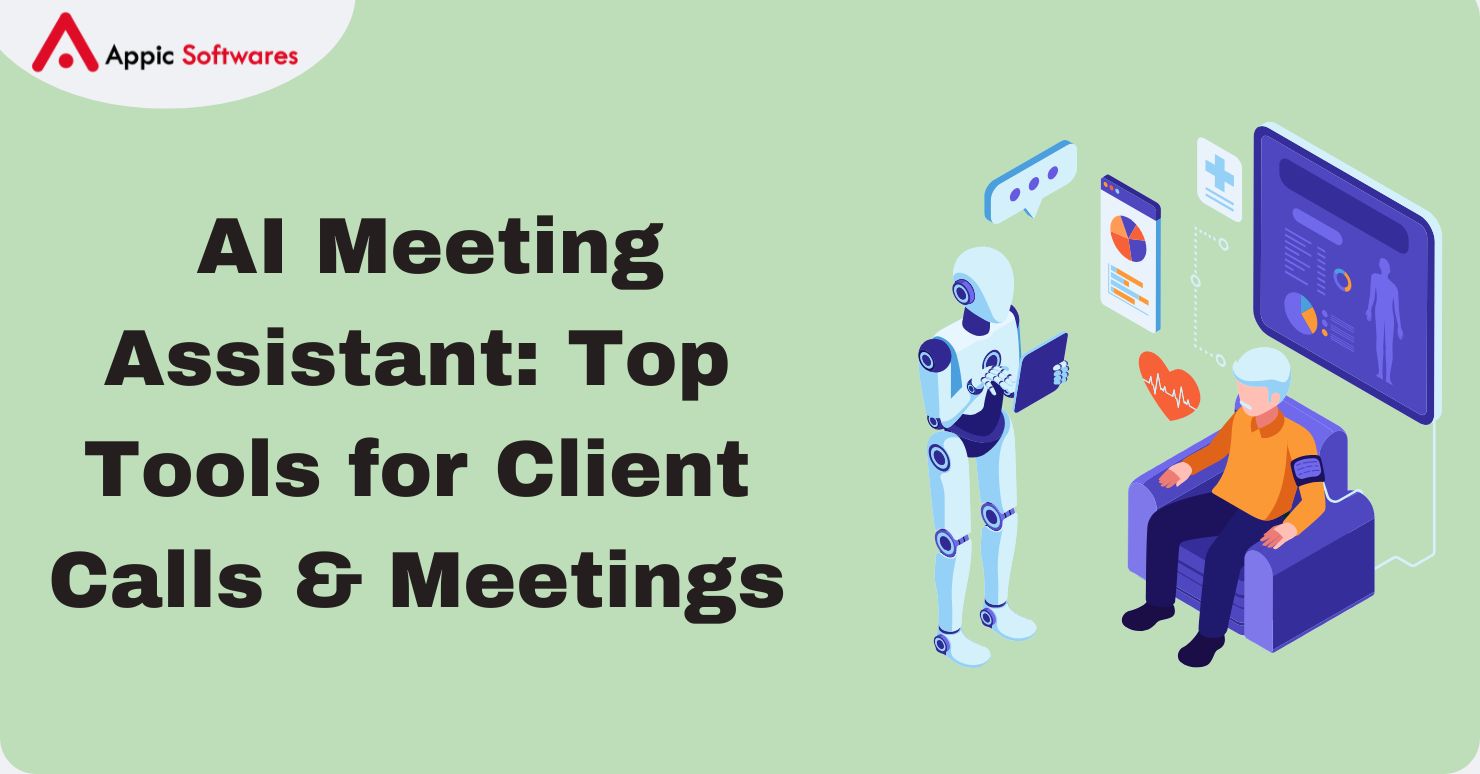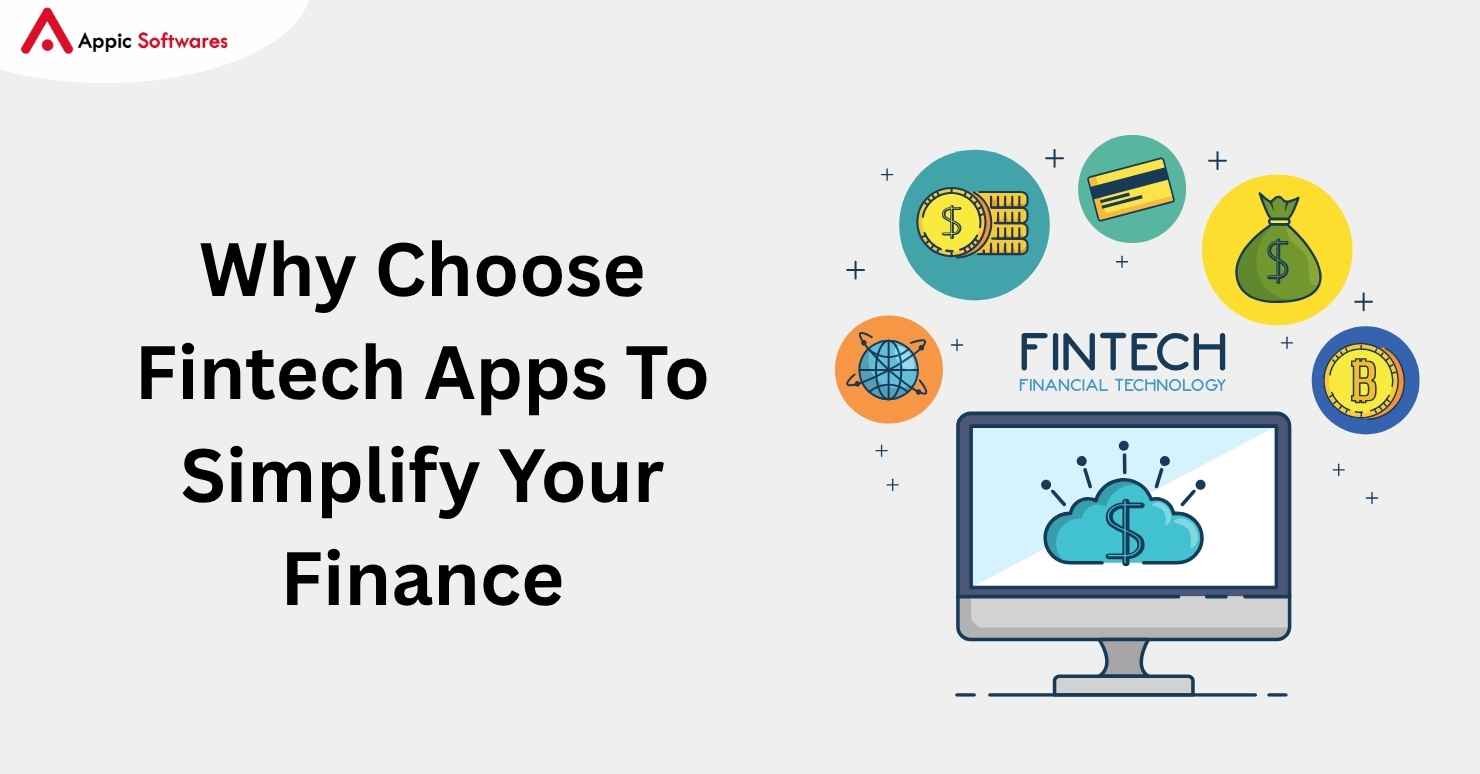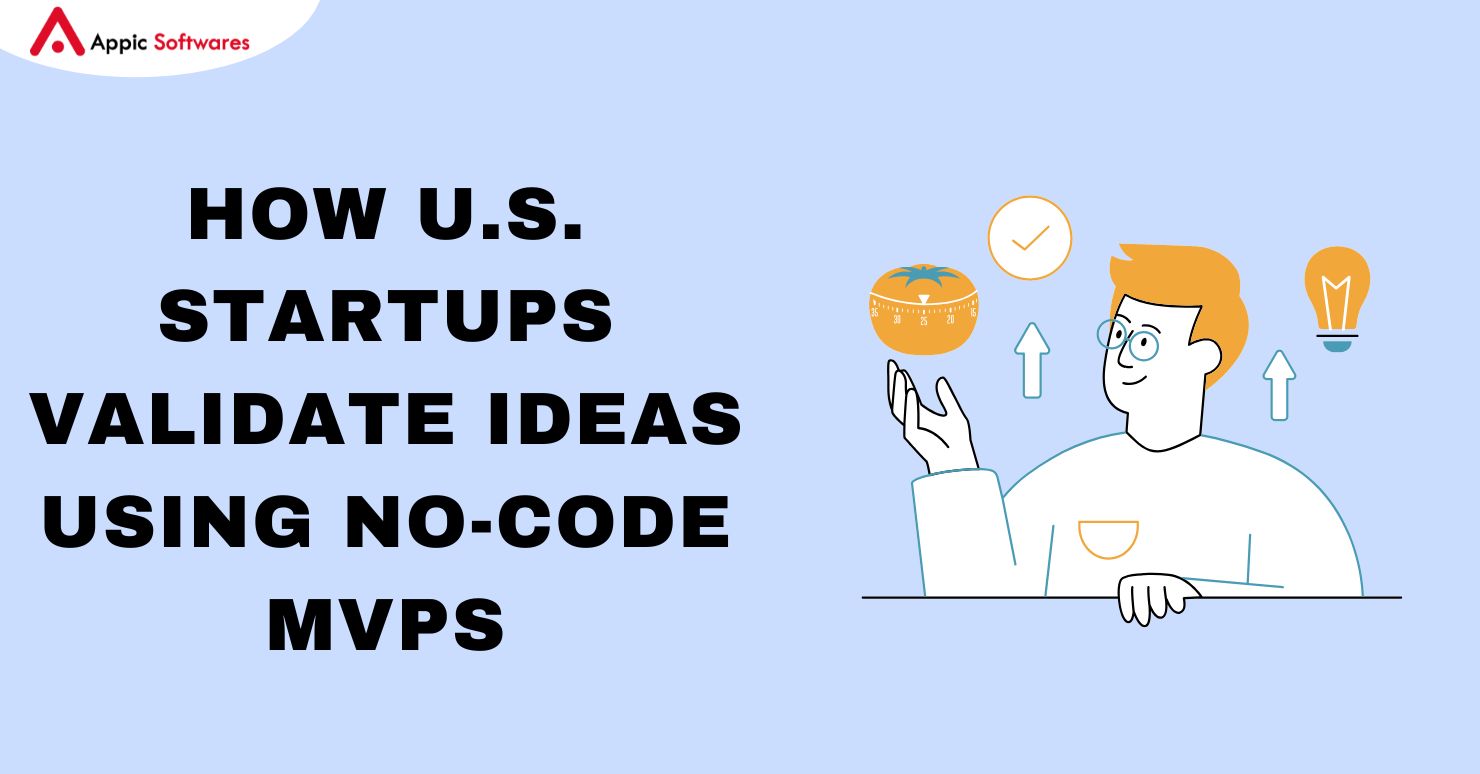
Gartner predicts that by 2025, 70% of all new business apps will use low-code or no-code technologies. This is a big increase from 2023, when less than 25% of new business applications used these technologies. And you know, while access to resources and startup culture is booming, the challenge lies in validating your startup idea before investing thousands (or even millions) into full development. That’s where no code MVP is changing the game.
The days when only developers could bring a startup vision to life are long gone. Today, thanks to low code and no code startups, even non-technical founders are building robust MVPs to test, launch, and scale ideas, without writing a single line of code.
In this article, we’ll walk you through how U.S. startups are leveraging no-code MVPs to rapidly validate ideas, reduce risk, and build early traction without blowing through their budgets.
What Is A No Code MVP?
A no code MVP is an early version of your product that was made with no-code tools. These platforms allow users to create applications through visual interfaces, eliminating the need for traditional programming. This approach enables startups to build MVP without code, facilitating rapid testing and iteration based on user feedback.
Well-known no-code platforms include:
- Bubble (Web apps)
- Webflow (Websites)
- Adalo (Mobile apps)
- Glide (Spreadsheet-driven apps)
- Thunkable (Cross-platform apps)
Why Validate A Startup Idea First?
Everybody has that “million-dollar idea,” but the reality is ideas by themselves are insufficient. What counts is whether real users would interact with or pay for your offering.
For startups, idea validation is the process of seeing whether your proposal addresses a genuine problem by testing it with possible users. It will help you answer the following questions, like:
- Will anybody make use of this?
- Are people ready to pay for this?
- Does anyone really want my idea?
Benefits Of No-Code MVPs For Startups
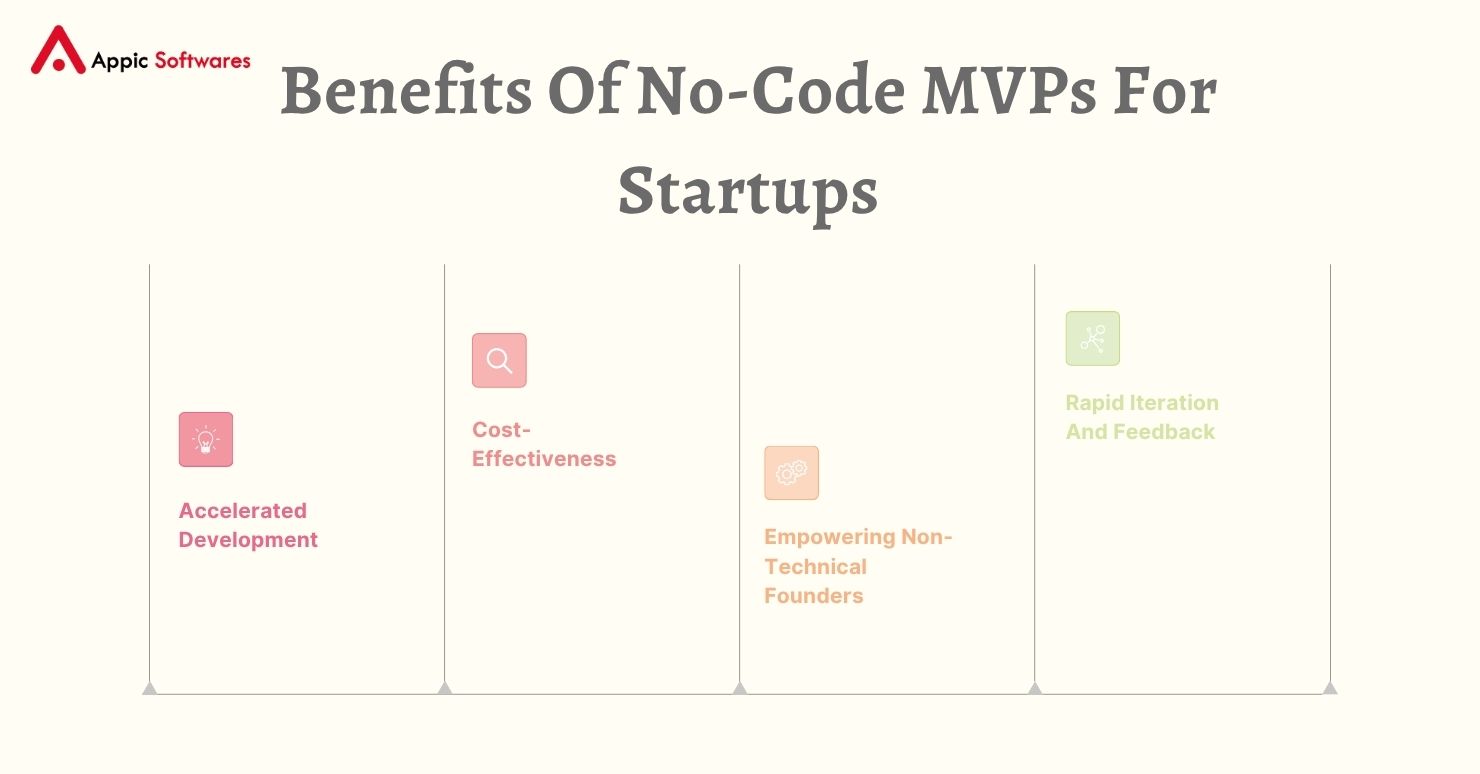
1. Accelerated Development
No-code platforms enable startups to create MVP without coding, significantly reducing development time. For instance, FINN, a car subscription service, built its initial platform using Webflow and Airtable, reaching $4 million in annual recurring revenue within its first year.
2. Cost-Effectiveness
Building an MVP for startup traditionally requires hiring developers, which can be costly. No-code solutions allow startups to validate their startup ideas with minimal financial investment, preserving resources for other critical areas like marketing and customer acquisition.
3. Empowering Non-Technical Founders
No-code tools democratize the development process, enabling founders without technical backgrounds to bring their ideas to life. This inclusivity fosters innovation by allowing a diverse range of entrepreneurs to participate in the startup ecosystem.
4. Rapid Iteration And Feedback
With no-code platforms, startups can quickly implement changes based on user feedback. This agility is vital for idea validation for startups, ensuring the product evolves in line with customer needs and preferences.
You may like reading: FlutterFlow No Code
Steps To Validate Your Startup Idea With A No-Code MVP
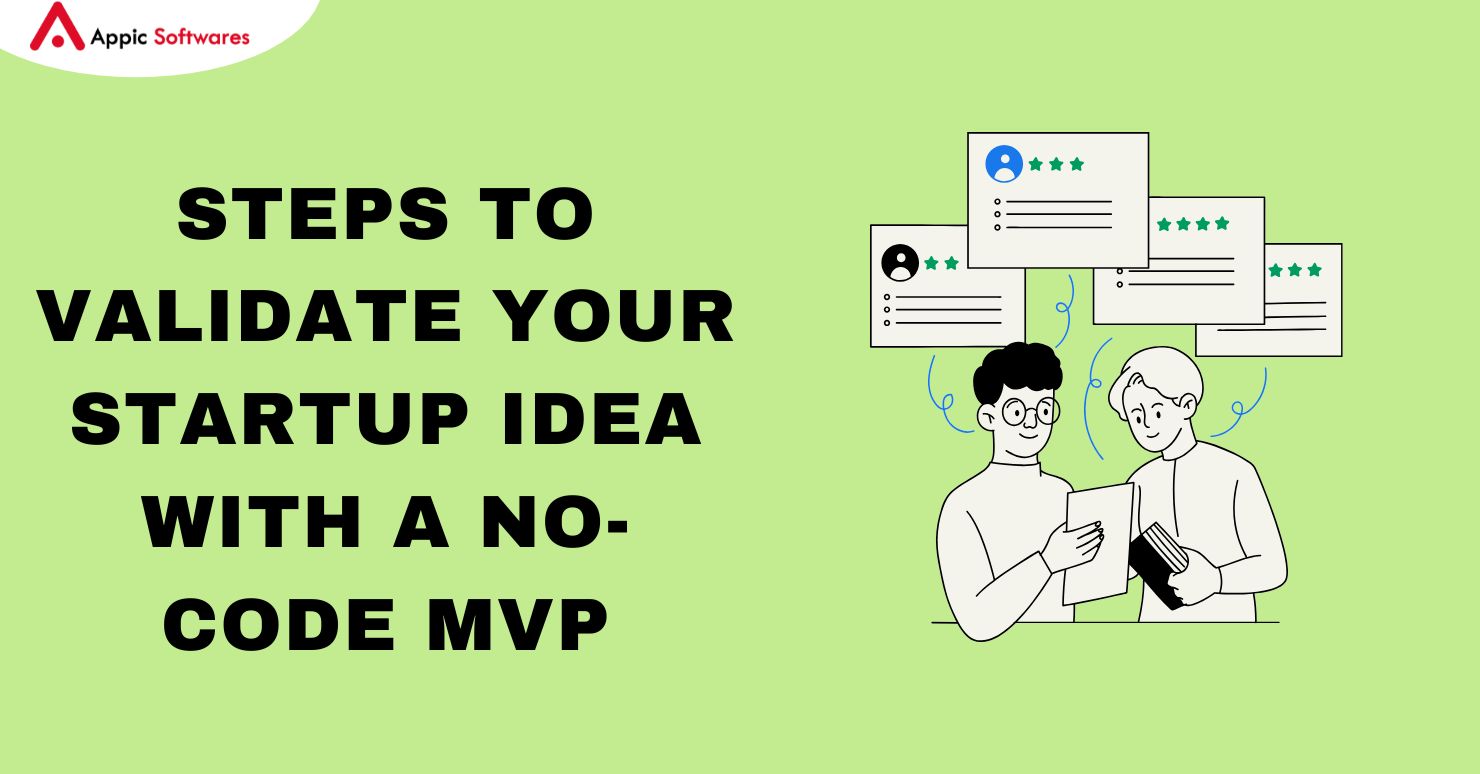
The most important question you must address, whether launching a startup or developing a product, is, “Will people really want this?” This is where validation becomes invaluable. And today, with no-code technologies emerging, you no longer have to be a developer to rapidly and reasonably test your startup idea.
Step 1: Identify The Problem
Real problems define everything from the start. Spend time knowing what problem you are tackling and who precisely is confronting it before starting any kind of building project. Is it daily difficulty folks experience? Is there an answer out there that just doesn’t work? Here you want to be quite precise about the issue. Speak with possible users, see how they now handle this problem, and try to put yourself in their place.
Step 2: You Need To Define Essential Features
Now that you understand the underlying issue, it’s time to concentrate on what your actual solution must do, no more, no less. You do not immediately have to create a flawless product. All you have to do is create the minimal version that successfully addresses the central problem. This is your MVP.
Step 3: Choose The Right No Code Tool
The entertaining aspect is this. There are hundreds of no-code solutions available today that enable you to create everything from complete apps to landing pages without writing a single line of code. Your concept will guide you in selecting a tool that fits your objectives and degree of comfort.
Start with a basic landing page utilizing sites like Carrd or Webflow if you only want to find out whether others are interested in your idea. Assessing tools like Glide, Adalo, Bubble, or FlutterFlow can help you create something more interactive like a mobile or web app. Every tool has advantages. For basic mobile apps using Google Sheets as a backend, Glide is fantastic; Bubble provides greater flexibility should you need customized procedures.
Step 4: Build The No Code MVP
Once you have chosen the correct tool, it’s time to realize at least the most basic form of your idea, whether it’s a standard MVP or an AI MVP development project focused on smart features or automation.
Right now, usability is your main factor. Ask yourself this question: “Can someone test your MVP and see how it works as intended?” Before distributing the no-code platform to others, you might have to spend some time studying it, viewing a few materials, and testing the app personally.
Step 5: Get Feedback From Users
You should show your MVP to real people once it’s ready. This step is crucial. Ask the people you’re trying to help—the ones who have the problem you’re trying to solve, to give it a try.
After they’ve used the MVP, ask them things like, “Was this helpful?” How could it be better? Did anything make sense? Pay close attention to what they say and don’t say, as well as how they use your goods. The way they respond will start to repeat itself. Users may love the idea but find it hard to understand how to use it. They might tell you about a function you didn’t think of.
You shouldn’t get feedback to feel good about your product. The goal is to find out what works and what doesn’t so you can improve it.
Step 6: Iterate Based On Feedback
Once you have feedback, it’s time to make things better. This is where an MVP without any code truly excels. Since you don’t have to hire a coder or write code, it’s easy to change the layout, add or remove features, or even switch to a different tool if you need to.
Now that you know more, go back to your MVP and make changes to it. You could make the hiring process easier, fix bugs, or add a feature that a lot of people have asked for. After that, you test again. Build, test, learn, and improve your idea over and over again until you’re sure it has real promise and people who want it. 
Comparison Of Popular No Code MVP Platforms For Startups
| No-Code Tool | Best For | Platform Type | Learning Curve | Key Features | Pricing |
| Bubble | Web apps | Web (Responsive) | Medium | Database, workflows, custom logic | Free tier, paid from $29/mo |
| Webflow | Marketing sites, Landing pages | Websites | Low | CMS, SEO tools, visual design control | Free tier, paid from $18/mo |
| Adalo | Mobile apps | iOS, Android | Low-Medium | Drag-drop UI, database, app publishing | Free tier, paid from $45/mo |
| Glide | Internal tools, dashboards | Mobile & Web | Very Low | Spreadsheet-based, quick deployment | Free tier, paid from $25/mo |
| Thunkable | Cross-platform mobile apps | iOS, Android, Web | Medium | Drag-drop builder, device integrations | Free tier, paid from $13/mo |
| Carrd | Single-page sites | Websites | Very Low | Super simple, fast setup, templates | Free tier, paid from $9/year |
| FlutterFlow | Cross-platform apps | Web & Mobile | Medium | Firebase integration, custom widgets | Free tier, paid from $30/mo |
Conclusion
No-code MVPs are revolutionizing how U.S. startups validate their ideas. By eliminating technical barriers, reducing costs, and enabling rapid prototyping, they allow entrepreneurs to test concepts quickly and pivot based on real user feedback. From landing pages built on Webflow to fully functional mobile apps with Adalo or FlutterFlow, startups can now move from idea to execution in a matter of days, not months.
In a competitive startup ecosystem, speed and agility matter. No-code MVPs provide the perfect testing ground to discover whether your idea has real market potential before making a significant financial commitment. Let Appic Softwares, a leading MVP development company, help you build a powerful no-code MVP that gets you market-ready fast. Whether you’re launching a web platform or a cross-platform app, our expert team can guide you through tool selection, MVP design, and early user testing.
Connect with us and take the first step toward launching your startup smarter, faster, and more affordably!
FAQs
1. What are the benefits of using MVP principles to test a product idea?
Testing your product idea using MVP (Minimum Viable Product) principles allows startups to launch quickly with minimal resources while still gathering essential market insights. It helps you avoid wasting time and money on features that users may not need or want. By releasing a simplified version of your product, you can receive real feedback from early adopters, which guides future development.
2. How can you validate a startup idea before building a full product?
Validating a startup idea involves confirming whether there’s a real demand for your product or service. Start by writing down your core goals, assumptions, and hypotheses to clarify your vision. Research the market to estimate potential size and customer segments. Explore online search trends to understand user interest, and conduct interviews with potential customers to gain direct feedback.
3. What steps should you follow to go from idea to MVP?
Taking an idea to MVP starts with defining the specific problem you’re solving and understanding your target audience. Once you have clarity, analyze competitors to see how they address similar issues and identify areas where your product can stand out. A well-tested MVP backed by real user data can demonstrate traction and credibility, making it easier to build an MVP and raise funds from angel investors, venture capitalists, or accelerator programs.






